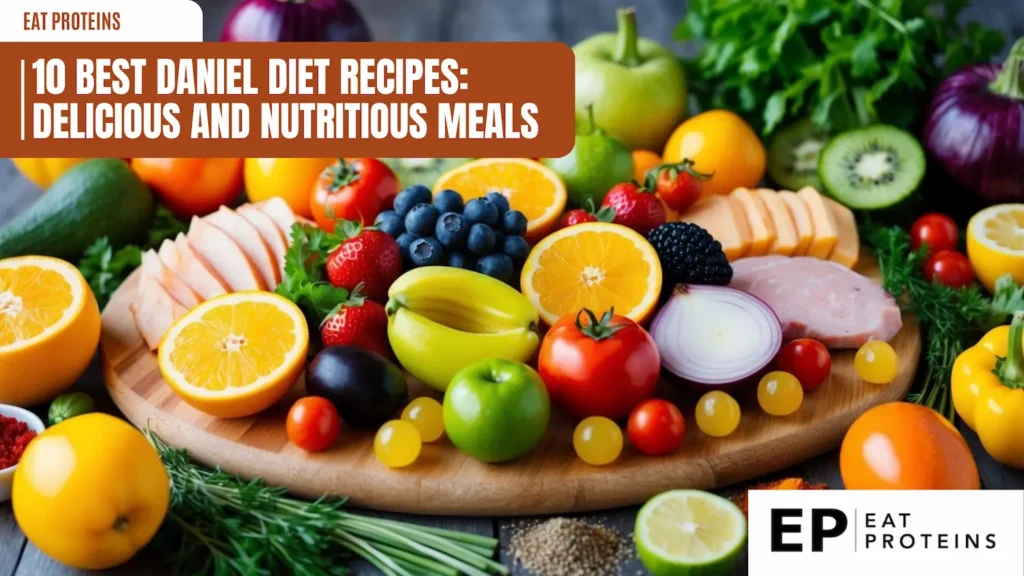
The Daniel diet, inspired by the biblical figure Daniel, focuses on plant-based meals and whole foods. Many people turn to this diet for spiritual reasons, seeking a deeper connection with their faith. In this article, I will share the 10 best Daniel diet recipes that are both nutritious and easy to make.
Adopting the Daniel Fast can be a refreshing way to improve health and wellness. By choosing recipes that align with this dietary plan, I can enjoy delicious meals while staying committed to my values and goals. Readers will find a variety of recipes that cater to different tastes and preferences.
1. Quinoa and Black Bean Salad
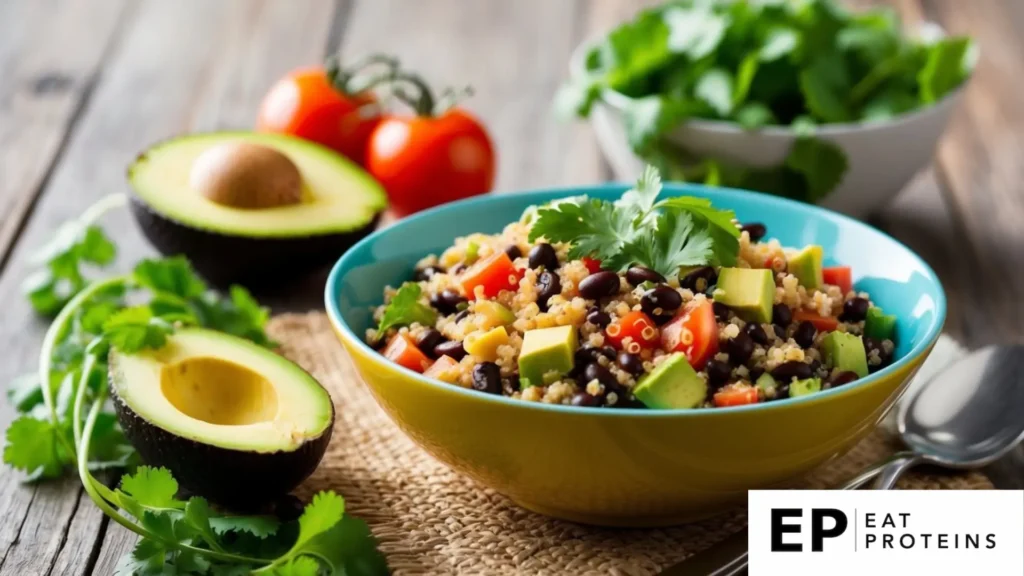
Quinoa and black bean salad is a nutritious dish packed with protein and fiber. Quinoa is a whole grain that is gluten-free and offers essential amino acids. Black beans add extra protein and a rich flavor.
Making this salad is quite easy. I enjoy it as a quick meal or a side dish. Here’s how I prepare it:
- Rinse 1 cup of quinoa under cold water.
- Cook the quinoa in 2 cups of water or vegetable broth. Bring to a boil, then reduce to low heat. Cover and simmer for 15 minutes.
- While the quinoa cooks, drain and rinse 1 can of black beans.
- After the quinoa cools, I combine it with the black beans in a large bowl.
- Add 1 diced bell pepper, 1 cup of corn, and a handful of chopped cilantro.
- For the dressing, mix 2 tablespoons of olive oil, lime juice, salt, and pepper. Pour it over the salad and toss gently.
This salad is refreshing and can be stored in the fridge for a few days. It’s a great option for meal prep or a delicious addition to any meal.
2. Sweet Potato and Lentil Stew
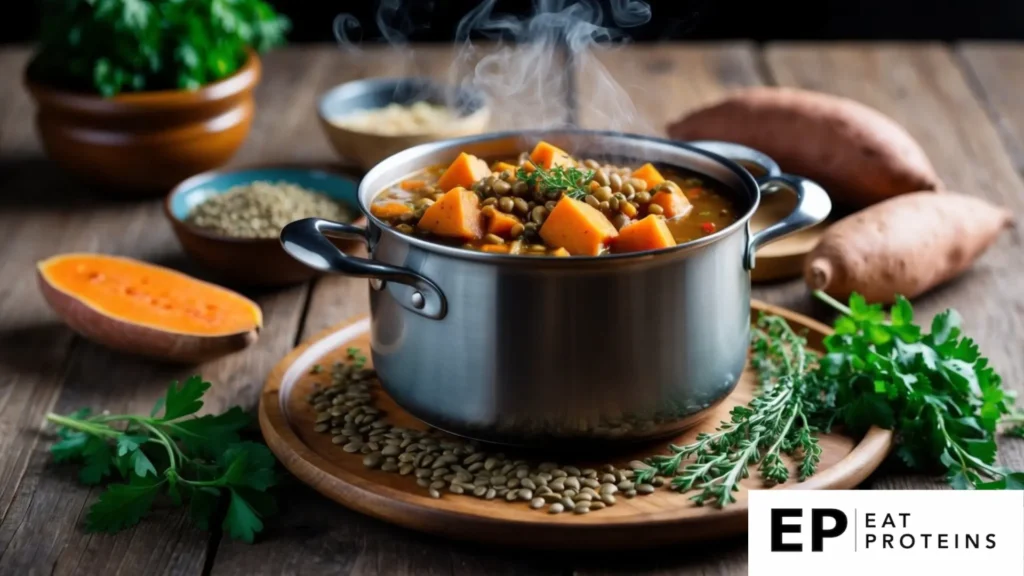
Sweet potato and lentil stew is a healthy and filling dish. It is rich in fiber, vitamins, and minerals. This recipe is simple and quick to make, perfect for anyone.
To prepare, gather these ingredients: 2 medium sweet potatoes, 1 cup lentils, 1 chopped onion, 2 cloves garlic, 4 cups vegetable broth, and your choice of spices like cumin or coriander.
First, peel and dice the sweet potatoes. Next, rinse the lentils under cold water.
- In a large pot, heat a little oil over medium heat.
- Add the chopped onion and garlic. Cook until fragrant.
- Stir in the sweet potatoes and lentils.
- Pour in the vegetable broth and add your spices.
- Bring to a boil, then reduce heat and simmer for about 30 minutes.
After cooking, the stew should be thick and the sweet potatoes soft. I enjoy serving it warm with bread or on its own.
3. Cucumber and Avocado Gazpacho
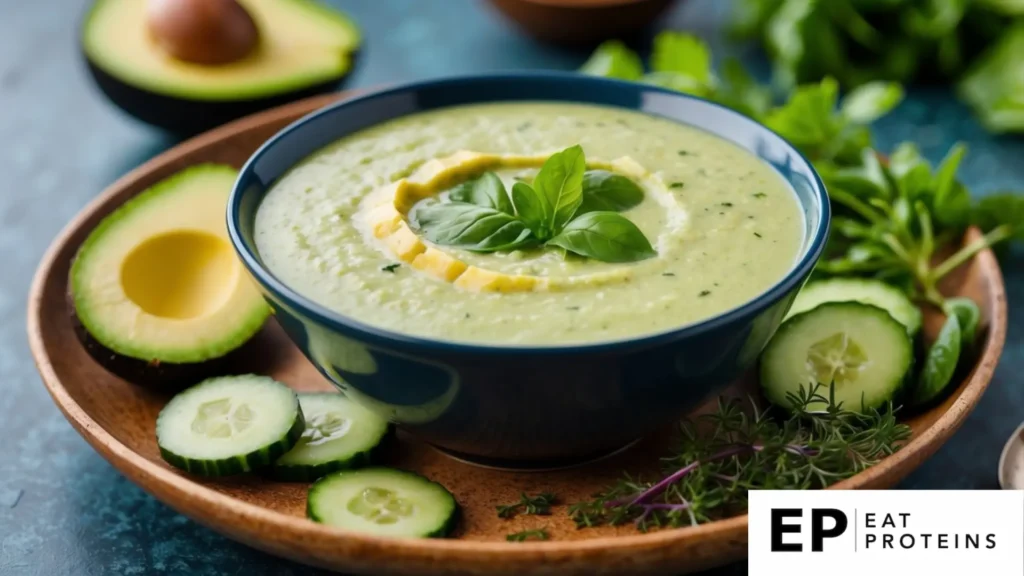
Cucumber and Avocado Gazpacho is a refreshing cold soup perfect for warm days. It combines the smoothness of avocado with the crispness of cucumber. This dish is nutritious and cooling, making it a great choice in the summer.
I find this recipe easy to make. It requires no cooking, just blending fresh ingredients. The preparation time is minimal, usually around 15 minutes.
Here are the steps to make it:
- Gather Ingredients: You will need 2 ripe avocados, 2 cups peeled and diced cucumbers, 1 cup vegetable broth, juice of 1 lime, salt, and pepper.
- Blend: In a blender, combine the cucumbers, avocados, vegetable broth, and lime juice. Blend until smooth.
- Season: Add salt and pepper to taste. Blend again for a few seconds.
- Chill: Pour the gazpacho into bowls and refrigerate for at least 30 minutes.
- Serve: Before serving, feel free to garnish with diced cucumber or cilantro for extra flavor.
This gazpacho is light, flavorful, and a great way to enjoy fresh vegetables.
4. Zucchini Noodles with Pesto
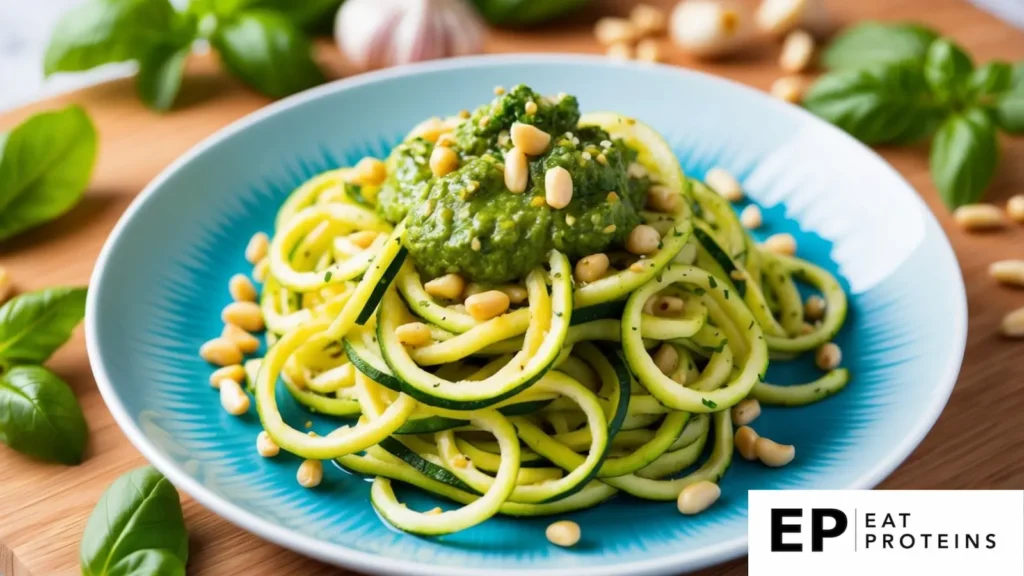
Zucchini noodles are a low-carb alternative to traditional pasta. They are made by spiralizing zucchini into thin strands. This dish is fresh, light, and easy to prepare.
To make zucchini noodles with pesto, I find it simple and quick. I usually start by gathering my ingredients: two medium zucchinis, one cup of fresh basil, a quarter cup of olive oil, two cloves of garlic, and salt to taste.
- First, I spiralize the zucchinis to create the noodles.
- Next, I blend the basil, olive oil, garlic, and salt to make the pesto sauce.
- In a skillet, I lightly sauté the zucchini noodles for about 3-5 minutes until tender.
- Then, I toss the noodles with the pesto until well coated.
This dish is not just easy but also a healthy option. It pairs well with grilled chicken or shrimp for added protein. Zucchini noodles are versatile and can absorb flavors well, making them a great base for many toppings.
5. Spicy Chickpea and Tomato Soup
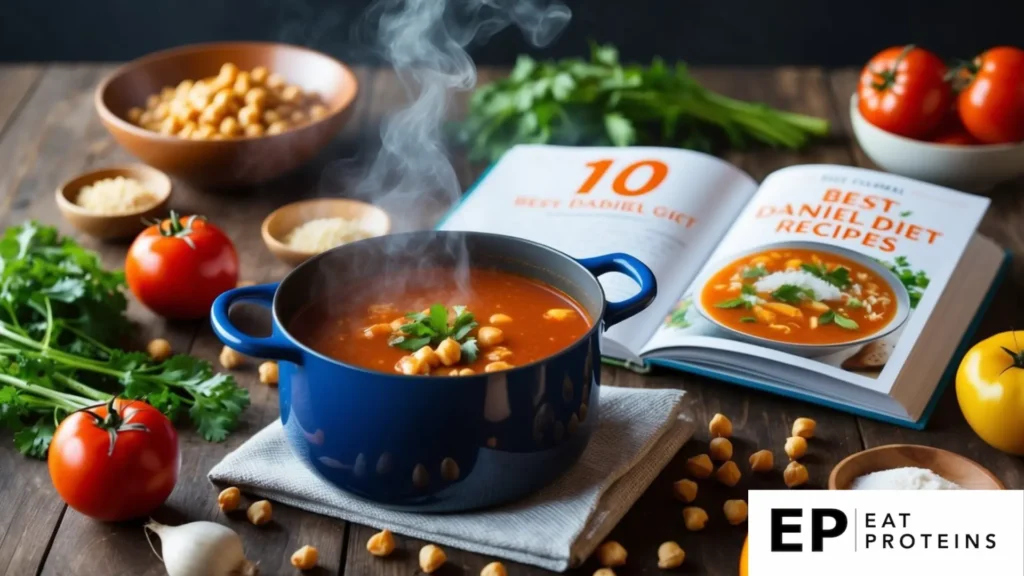
Spicy Chickpea and Tomato Soup is a flavorful option that fits well within the Daniel Diet. It combines protein-rich chickpeas with tomatoes to create a hearty meal. This soup is easy to make and can be prepared in about 30 minutes.
To start, I heat 1 tablespoon of olive oil in a pot. Then, I add 1 chopped onion and sauté until it’s soft. Next, I include 2 minced garlic cloves and cook for another minute.
After that, I add 1 can of diced tomatoes and 1 can of drained chickpeas. I season the mixture with 1 teaspoon of cumin, 1 teaspoon of chili powder, and salt to taste. I pour in 2 cups of vegetable broth and bring the soup to a boil.
Once boiling, I reduce the heat and let it simmer for about 15 minutes. This allows the flavors to blend. Finally, I can adjust the seasoning to my liking before serving.
This soup is not only easy to prepare but also nutritious. It’s a satisfying meal packed with flavors and benefits.
6. Stuffed Bell Peppers with Quinoa

Stuffed bell peppers with quinoa are a healthy and tasty dish. They combine the goodness of quinoa with colorful bell peppers. Quinoa is a grain-like seed that is packed with protein and nutrients.
Making this dish is quite easy. I enjoy preparing it because it allows for creativity with fillings. It typically takes about 30 minutes to bake after prep.
Here are the simple steps I follow:
- Preheat the oven to 375°F (190°C).
- Cook 1 cup of quinoa according to package instructions.
- While the quinoa cooks, cut the tops off 4 bell peppers and remove the seeds.
- Mix the cooked quinoa with 1 cup of diced tomatoes, 1 cup of black beans, and spices to taste.
- Stuff the mixture into the bell peppers.
- Place the stuffed peppers in a baking dish and add a bit of water to the bottom.
- Cover with foil and bake for 30 minutes.
This dish is nutritious, colorful, and satisfying. It’s a great option for anyone looking to follow the Daniel diet.
7. Roasted Cauliflower Tacos
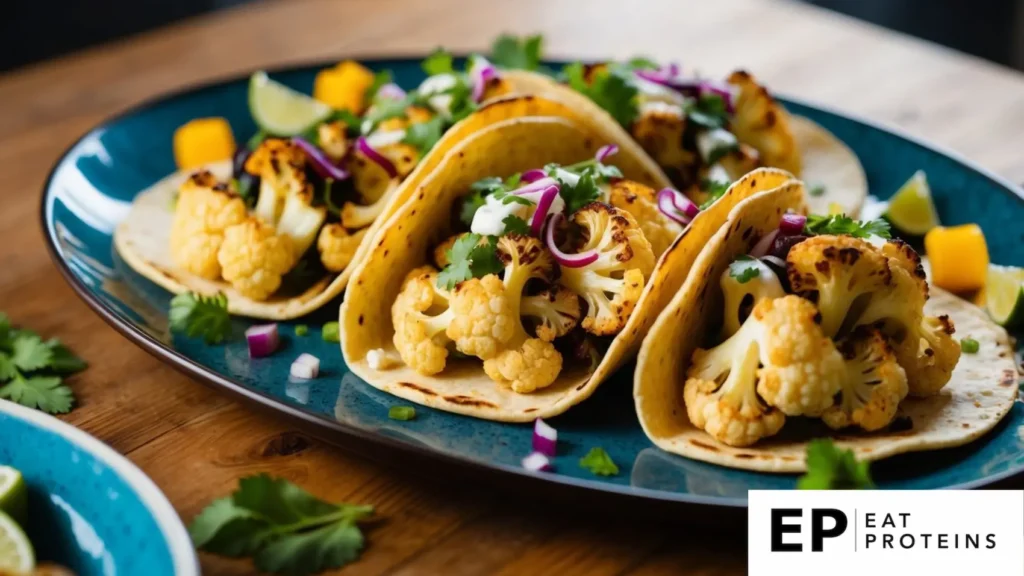
Roasted cauliflower tacos are a tasty and healthy option for anyone following the Daniel diet. Cauliflower is a versatile vegetable that takes on flavors well, making it a great substitute for meat.
I find this recipe easy to make and perfect for a quick meal. Here’s a simple way to prepare them:
- Preheat your oven to 425°F (220°C).
- Cut one head of cauliflower into small florets.
- Toss the florets in olive oil, salt, and any spices you like, such as cumin or paprika.
- Spread the florets on a baking sheet.
- Roast for 25-30 minutes, or until they are golden brown and tender.
When the cauliflower is ready, I like to serve it in corn tortillas with toppings like avocado, salsa, and fresh cilantro. This dish is not only satisfying but also packed with nutrients. Roasted cauliflower tacos offer a delicious way to enjoy plant-based eating on the Daniel diet.
8. Mango and Black Bean Salsa
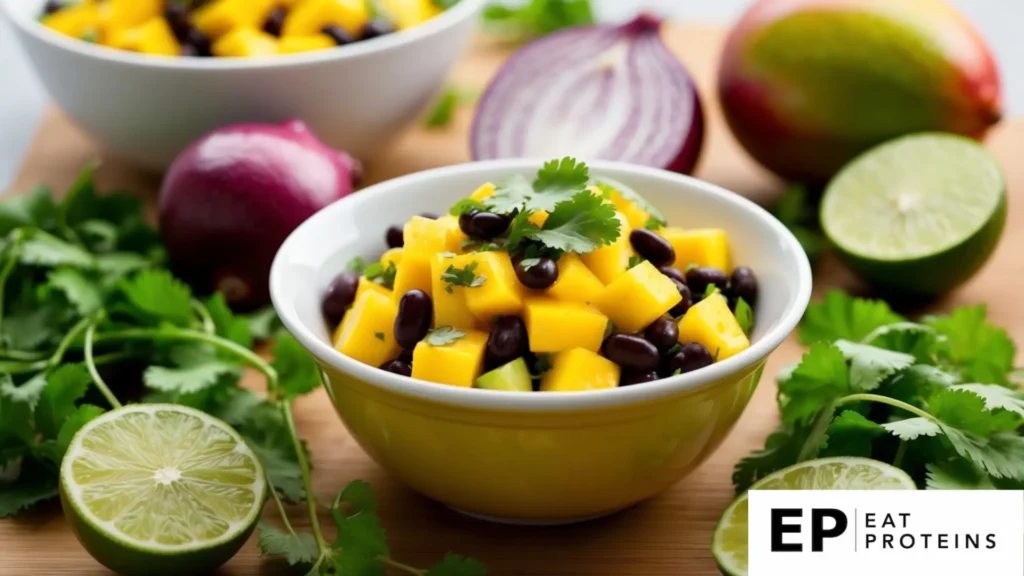
Mango and Black Bean Salsa is a vibrant dish that combines sweet, spicy, and savory flavors. This salsa is fresh, nutritious, and perfect for various meals. It fits well within the Daniel Fast, focusing on whole and plant-based ingredients.
I find this recipe easy to make. It takes about 15 minutes to prepare, making it great for quick meals or snacks.
To create this salsa, follow these steps:
- Dice 1 ripe mango and set it aside.
- Rinse and drain 1 can of black beans, then add them to your bowl.
- Chop 1/4 cup of red onion for a bit of bite.
- Add 1 diced jalapeño for some heat, if desired.
- Squeeze the juice of 1 lime over the mixture.
- Toss everything together and season with salt and pepper to taste.
This refreshing salsa is great with tortilla chips or as a topping for salads and main dishes. It’s a versatile option that brings a burst of flavor to any meal.
9. Coconut Curry with Tofu
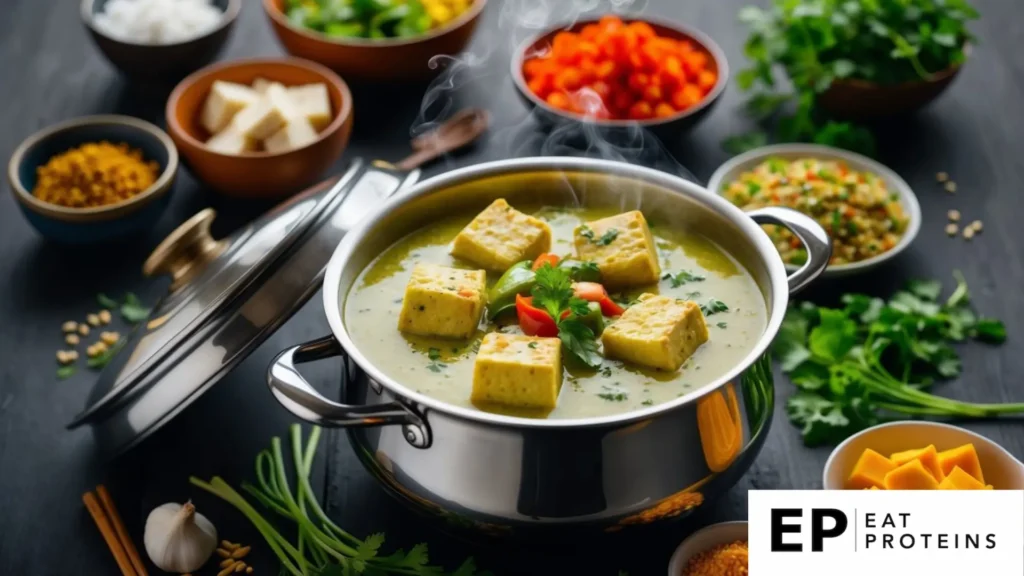
Coconut curry with tofu is a delicious and healthy dish. It brings together the creamy taste of coconut milk and the protein-rich benefits of tofu.
Making this recipe is quite simple. I find that it takes about 30 minutes from start to finish.
Here are the steps to prepare it:
- Ingredients: Gather 1 can of coconut milk, 1 block of firm tofu, 1 tablespoon of curry powder, 1 tablespoon of olive oil, and your choice of vegetables (like bell peppers or spinach).
- Prepare Tofu: Cut the tofu into cubes. Heat the olive oil in a pan over medium heat. Add the tofu and cook for about 5-7 minutes until golden brown.
- Add Coconut Milk: Once the tofu is done, pour in the coconut milk and add the curry powder. Stir well.
- Add Vegetables: Toss in your chosen vegetables. Let the mixture simmer for 10-15 minutes until the vegetables are tender.
- Serve: Enjoy the coconut curry with tofu on its own or over rice.
This recipe is easy to customize with different spices or vegetables, making it versatile.
10. Spinach and Artichoke Dip
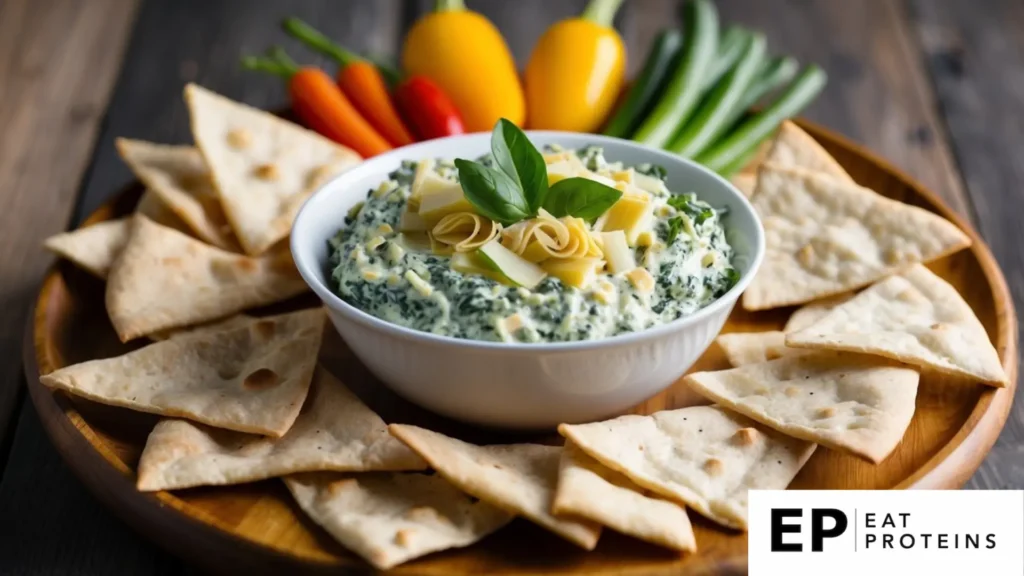
Spinach and artichoke dip is a creamy and flavorful dish, popular as an appetizer. It features cooked spinach, artichoke hearts, and a cheesy base. This recipe is simple and quick to prepare.
To make this dip, I gather the following ingredients: 1 cup of cooked spinach, 1 cup of chopped artichoke hearts, 1 cup of cream cheese, 1 cup of sour cream, and 1 cup of shredded cheese.
Here are the steps I follow:
- Preheat the oven to 350°F (175°C).
- In a bowl, I mix the cream cheese and sour cream until smooth.
- I add the cooked spinach and chopped artichokes to the mixture.
- Next, I stir in the shredded cheese.
- Once everything is combined, I transfer the mixture to a baking dish.
- I bake it for about 25 minutes or until it is bubbly and golden on top.
This dip pairs well with tortilla chips, pita bread, or fresh vegetables. It’s a great option for gatherings or as a tasty snack.
What are the Nutritional Benefits of the Daniel Diet?
The Daniel Diet focuses on whole foods that provide essential nutrients. Many people find that this way of eating offers significant health benefits, including better energy levels and improved well-being.
What are the Key Nutrients and Their Roles in the Daniel Diet?
In the Daniel Diet, I focus on key nutrients that play an essential role in health. These nutrients include:
- Fiber: Found in fruits, vegetables, and whole grains, fiber aids digestion and helps maintain healthy cholesterol levels.
- Vitamins and Minerals: Foods like leafy greens and beans are rich in vitamins A, C, and K, along with minerals like potassium and magnesium.
- Antioxidants: Fruits such as berries are high in antioxidants, which help protect my body from damage caused by free radicals.
By concentrating on these nutrients, the Daniel Diet promotes a balanced intake that supports overall health and vitality.
What Health Improvements are Observed with the Daniel Diet?
Many people, including myself, have noted various health improvements while following the Daniel Diet. Some of these benefits include:
- Weight Loss: The emphasis on whole foods naturally reduces calorie intake, which can lead to weight loss.
- Increased Energy: Eating nutrient-dense foods helps maintain steady energy levels throughout the day.
- Reduced Inflammation: The diet is low in processed foods, which may help reduce inflammation and its associated health risks.
These health improvements can motivate others to adopt the Daniel Diet for better well-being. The combination of balanced nutrients and mindful eating encourages a healthier lifestyle.
What are Common Ingredients in Daniel Diet Recipes?
The Daniel Diet emphasizes whole, natural foods. I focus on key ingredient categories that provide nutrients while aligning with the diet’s principles. Here are some common ingredients you’ll find in Daniel Diet recipes.
What Fruits and Vegetables are Used in the Daniel Diet?
Incorporating a variety of fruits and vegetables is essential for the Daniel Diet. These foods are packed with vitamins, minerals, and antioxidants. Some popular choices include:
- Fruits such as apples, oranges, and berries bring natural sweetness and essential nutrients.
- Vegetables like kale, spinach, carrots, and bell peppers offer fiber and important vitamins.
I often prepare hearty salads or smoothie bowls that highlight these ingredients. Roasting vegetables enhances their natural flavors, making them a tasty side dish or main ingredient.
What Whole Grains and Legumes are Included in the Daniel Diet?
Whole grains and legumes serve as excellent sources of energy and protein. They contain more nutrients than their refined counterparts. Key examples are:
- Quinoa is a complete protein that cooks quickly and has a fluffy texture.
- Brown rice provides fiber and B vitamins and pairs well with many dishes.
- Lentils and chickpeas are rich in protein and can be used in soups, stews, or salads for added heartiness.
I appreciate how these ingredients make meals filling while supporting overall health.
What Healthy Fats and Oils are Used in the Daniel Diet?
Healthy fats and oils are important for balanced nutrition. They help with nutrient absorption and provide energy. Common choices include:
- Olive oil is a staple for cooking and dressings, known for its heart-healthy properties.
- Avocados offer healthy monounsaturated fats and can be added to salads or spreads.
- Nuts and seeds, such as almonds and chia seeds, provide crunch and additional nutrients.
I enjoy making dressings with olive oil and using avocados to add creaminess to my dishes. Incorporating these healthy fats ensures satisfying meals that align with the diet’s goals.
How to Create Your Own Daniel Diet Recipes?
Creating your own recipes for the Daniel Diet can be both fun and rewarding. By focusing on flavors, textures, and careful planning, I can ensure that my meals are both satisfying and healthy.
How to Balance Flavors and Textures in Daniel Diet Recipes?
When I create my own recipes, I focus on balancing flavors. I aim to combine sweet, savory, and spicy elements. For example, adding spices like cumin or paprika can enhance a dish’s flavors.
I also pay attention to textures. Mixing crunchy ingredients like nuts or seeds with softer items like steamed vegetables makes my meals more enjoyable. A useful tip is to use a variety of cooking methods, such as roasting, steaming, and sautéing, to add depth to each dish.
To boost taste, I often incorporate herbs. Fresh herbs like basil or cilantro can brighten up a recipe, while dried herbs provide a robust flavor.
How to Plan and Prepare Meals on the Daniel Diet?
Planning my meals in advance helps me maintain the Daniel Diet. I start by creating a weekly menu. I list out breakfast, lunch, dinner, and snacks to avoid last-minute decisions.
I also prepare ingredients ahead of time. Chopping vegetables or cooking large batches of grains allows me to save time during busy days. I keep my pantry stocked with staples like beans, whole grains, and frozen fruits, which can be used in various recipes.
Utilizing a meal prep container is a great idea. I can portion my meals for easy grab-and-go options, which supports my commitment to the dietary plan. With careful planning, I find it easier to stick to the Daniel Diet and enjoy my meals.
